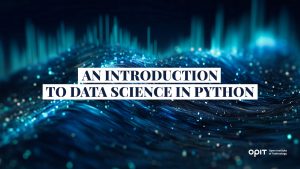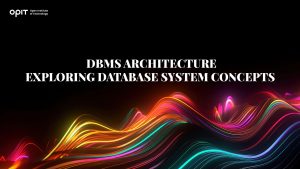

The larger your database, the higher the possibility of data repetition and inaccuracies that compromise the results you pull from the database. Normalization in DBMS exists to counteract those problems by helping you to create more uniform databases in which redundancies are less likely to occur.
Mastering normalization is a key skill in DBMS for the simple fact that an error-strewn database is of no use to an organization. For example, a retailer that has to deal with a database that has multiple entries for phone numbers and email addresses is a retailer that can’t see as effectively as one that has a simple route to the customer. Let’s look at normalization in DBMS and how it helps you to create a more organized database.
The Concept of Normalization
Grab a pack of playing cards and throw them onto the floor. Now, pick up the “Jack of Hearts.” It’s a tough task because the cards are strewn all over the place. Some are facing down and there’s no rhyme, reason, or pattern to how the cards lie, meaning you’re going to have to check every card individually to find the one you want.
That little experiment shows you how critical organization is, even with a small set of “data.” It also highlights the importance of normalization in DBMS. Through normalization, you implement organizational controls using a set of principles designed to achieve the following:
- Eliminate redundancy – Lower (or eliminate) occurrences of data repeating across different tables, or inside individual tables, in your DBMS.
- Minimize data anomalies – Better organization makes it easier to spot datasets that don’t fit the “norm,” meaning fewer anomalies.
- Improve data integrity – More accurate data comes from normalization controls. Database users can feel more confident in their results because they know that the controls ensure integrity.
The Process of Normalization
If normalization in DBMS is all about organization, it stands to reason that they would be a set process to follow when normalizing your tables and database:
- Decompose your tables – Break every table down into its various parts, which may lead to you creating several tables out of one. Through decomposition, you separate different datasets, eliminate inconsistencies, and set the stage for creating relationships and dependencies between tables.
- Identify functional dependencies – An attribute in one table may be dependent on another to exist. For example, a “Customer ID” number in a retailer’s “Customer” table is functionally dependent on the “Customer Name” field because the ID can’t exist without the customer. Identifying these types of dependencies ensures you don’t end up with empty records (such as a record with a “Customer ID” and no customer attached to it).
- Apply normalization rules – Once you’re broken down your table and identified the functional dependencies, you apply relevant normalization rules. You’ll use Normal Forms to do this, with the six highlighted below each having its own rules, structures, and use cases.
Normal Forms in DBMS
There isn’t a “single” way to achieve normalization in DBMS because every database (and the tables it contains) is different. Instead, there are six normal forms you may use, with each having its own rules that you need to understand to figure out which to apply.
First Normal Form (1NF)
If a relation can’t contain multiple values, it’s in 1NF. In other words, each attribute in the table can only contain a single (called “atomic”) value.
Example
If a retailer wants to store the details of its customers, it may have attributes in its table like “Customer Name,” “Phone Number,” and “Email Address.” By applying 1NF to this table, you ensure that the attributes that could contain multiple entries (“Phone Number” and “Email Address”) only contain one, making contacting that customer much simpler.
Second Normal Form (2NF)
A table that’s in 2NF is in 1NF, with the additional condition that none of its non-prime attributes depend on a subset of candidate keys within the table.
Example
Let’s say an employer wants to create a table that contains information about an employee, the skills they have, and their age. An employee may have multiple skills, leading to multiple records for the same employee in the table, with each denoting a skill while the ID number and age of the employee repeat for each record.
In this table, you’ve achieved 1NF because each attribute has an atomic value. However, the employee’s age is dependent on the employee ID number. To achieve 2NF, you’d break this table down into two tables. The first will contain the employee’s ID number and age, with that ID number linking to a second table that lists each of the skills associated with the employee.
Third Normal Form (3NF)
In 3NF, the table you have must already be in 2NF form, with the added rule of removing the transitive functional dependency of the non-prime attribute of any super key. Transitive functional dependency occurs if the dependency is the result of a pair of functional dependencies. For example, the relationship between A and C is a transitive dependency if A depends on B, B depends on C, but B doesn’t depend on A.
Example
Let’s say a school creates a “Students” table with the following attributes:
- Student ID
- Name
- Zip Code
- State
- City
- District
In this case, the “State,” “District,” and “City” attributes all depend on the “Zip Code” attribute. That “Zip” attribute depends on the “Student ID” attribute, making “State,” “District,” and “City” all transitively depending on “Student ID.”
To resolve this problem, you’d create a pair of tables – “Student” and “Student Zip.” The “Student” table contains the “Student ID,” “Name,” and “Zip Code” attributes, with that “Zip Code” attribute being the primary key of a “Student Zip” table that contains the rest of the attributes and links to the “Student” table.
Boyce-Codd Normal Form (BCNF)
Often referred to as 3.5NF, BCNF is a stricter version of 3NF. So, this normalization in DBMS rule occurs if your table is in 3NF, and for every functional dependence between two fields (i.e., A -> B), A is the super key of your table.
Example
Sticking with the school example, every student in a school has multiple classes. The school has a table with the following fields:
- Student ID
- Nationality
- Class
- Class Type
- Number of Students in Class
You have several functional dependencies here:
- Student ID -> Nationality
- Class -> Number of Students in Class, Class Type
As a result, both the “Student ID” and “Class” attributes are candidate keys but can’t serve as keys alone. To achieve BCNF normalization, you’d break the above table into three – “Student Nationality,” “Student Class,” and “Class Mapping,” allowing “Student ID” and “Class” to serve as primary keys in their own tables.
Fourth Normal Form (4NF)
In 4NF, the database must meet the requirements of BCNF, in addition to containing no more than a single multivalued dependency. It’s often used in academic circles, as there’s little use for 4NF elsewhere.
Example
Let’s say a college has a table containing the following fields:
- College Course
- Lecturer
- Recommended Book
Each of these attributes is independent of the others, meaning each can change without affecting the others. For example, the college could change the lecturer of a course without altering the recommended reading or the course’s name. As such, the existence of the course depends on both the “Lecturer” and “Recommended Book” attributes, creating a multivalued dependency. If a DBMS has more than one of these types of dependencies, it’s a candidate for 4NF normalization.
Fifth Normal Form (5NF)
If your table is in 4NF, has no join dependencies, and all joining is lossless, it’s in 5NF. Think of this as the final form when it comes to normalization in DBMS, as you’ve broken your table down so much that you’ve made redundancy impossible.
Example
A college may have a table that tells them which lecturers teach certain subjects during which semesters, creating the following attributes:
- Subject
- Lecturer Name
- Semester
Let’s say one of the lecturers teaches both “Physics” and “Math” for “Semester 1,” but doesn’t teach “Math” for Semester 2. That means you need to combine all of the fields in this table to get an accurate dataset, leading to redundancy. Add a third semester to the mix, especially if that semester has no defined courses or lecturers, and you have to join dependencies.
The 5NF solution is to break this table down into three tables:
- Table 1 – Contains the “Semester” and “Subject” attributes to show which subjects are taught in each semester.
- Table 2 – Contains the “Subject” and “Lecturer Name” attributes to show which lecturers teach a subject.
- Table 3 – Contains the “Semester” and “Lecturer Name” attributes so you can see which lecturers teach during which semesters.
Benefits of Normalization in DBMS
With normalization in DBMS being so much work, you need to know the following benefits to show that it’s worth your effort:
- Improved database efficiency
- Better data consistency
- Easier database maintenance
- Simpler query processing
- Better access controls, resulting in superior security
Limitations and Trade-Offs of Normalization
Normalization in DBMS does have some drawbacks, though these are trade-offs that you accept for the above benefits:
- The larger your database gets, the more demands it places on system performance.
- Breaking tables down leads to complexity.
- You have to find a balance between normalization and denormalization to ensure your tables make sense.
Practical Tips for Mastering Normalization Techniques
Getting normalization in DBMS is hard, especially when you start feeling like you’re dividing tables into so many small tables that you’re losing track of the database. These tips help you apply normalization correctly:
- Understand the database requirements – Your database exists for you to extract data from it, so knowing what you’ll need to extract indicates whether you need to normalize tables or not.
- Document all functional dependencies – Every functional dependence that exists in your database makes the table in which it exists a candidate for normalization. Identify each dependency and document it so you know whether you need to break the table down.
- Use software and tools – You’re not alone when poring through your database. There are plenty of tools available that help you to identify functional dependencies. Many make normalization suggestions, with some even being able to carry out those suggestions for you.
- Review and refine – Every database evolves alongside its users, so continued refining is needed to identify new functional dependencies (and opportunities for normalization).
- Collaborate with other professionals – A different set of eyes on a database may reveal dependencies and normalization opportunities that you don’t see.
Make Normalization Your New Norm
Normalization may seem needlessly complex, but it serves the crucial role of making the data you extract from your database more refined, accurate, and free of repetition. Mastering normalization in DBMS puts you in the perfect position to create the complex databases many organizations need in a Big Data world. Experiment with the different “normal forms” described in this article as each application of the techniques (even for simple tables) helps you get to grips with normalization.
Related posts

Bring talented tech experts together, set them a challenge, and give them a deadline. Then, let them loose and watch the magic happen. That, in a nutshell, is what hackathons are all about. They’re proven to be among the most productive tech events when it comes to solving problems and accelerating innovation.
What Is a Hackathon?
Put simply, a hackathon is a short-term event – often lasting just a couple of days, or sometimes even only a matter of hours – where tech experts come together to solve a specific problem or come up with ideas based on a central theme or topic. As an example, teams might be tasked with discovering a new way to use AI in marketing or to create an app aimed at improving student life.
The term combines the words “hack” and “marathon,” due to how participants (hackers or programmers) are encouraged to work around-the-clock to create a prototype, proof-of-concept, or new solution. It’s similar to how marathon runners are encouraged to keep running, putting their skills and endurance to the test in a race to the finish line.
The Benefits of Hackathons
Hackathons provide value both for the companies that organize them and the people who take part. Companies can use them to quickly discover new ideas or overcome challenges, for example, while participants can enjoy testing their skills, innovating, networking, and working either alone or as part of a larger team.
Benefits for Companies and Sponsors
Many of the world’s biggest brands have come to rely on hackathons as ways to drive innovation and uncover new products, services, and opportunities. Meta, for example, the brand behind Facebook, has organized dozens of hackathons, some of which have led to the development of well-known Facebook features, like the “Like” button. Here’s how hackathons help companies:
- Accelerate Innovation: In fast-moving fields like technology, companies can’t always afford to spend months or years working on new products or features. They need to be able to solve problems quickly, and hackathons create the necessary conditions to deliver rapid success.
- Employee Development: Leading companies like Meta have started to use annual hackathons as a way to not only test their workforce’s skills but to give employees opportunities to push themselves and broaden their skill sets.
- Internal Networking: Hackathons also double up as networking events. They give employees from different teams, departments, or branches the chance to work with and learn from one another. This, in turn, can promote or reinforce team-oriented work cultures.
- Talent Spotting: Talents sometimes go unnoticed, but hackathons give your workforce’s hidden gems a chance to shine. They’re terrific opportunities to see who your best problem solvers and most creative thinkers at.
- Improving Reputation: Organizing regular hackathons helps set companies apart from their competitors, demonstrating their commitment to innovation and their willingness to embrace new ideas. If you want your brand to seem more forward-thinking and innovative, embracing hackathons is a great way to go about it.
Benefits for Participants
The hackers, developers, students, engineers, and other people who take part in hackathons arguably enjoy even bigger and better benefits than the businesses behind them. These events are often invaluable when it comes to upskilling, networking, and growing, both personally and professionally. Here are some of the main benefits for participants, explained:
- Learning and Improvement: Hackathons are golden opportunities for participants to gain knowledge and skills. They essentially force people to work together, sharing ideas, contributing to the collective, and pushing their own boundaries in pursuit of a common goal.
- Networking: While some hackathons are purely internal, others bring together different teams or groups of people from different schools, businesses, and places around the world. This can be wonderful for forming connections with like-minded individuals.
- Sense of Pride: Everyone feels a sense of pride after accomplishing a project or achieving a goal, but this often comes at the end of weeks or months of effort. With hackathons, participants can enjoy that same satisfying feeling after just a few hours or a couple of days of hard work.
- Testing Oneself: A hackathon is an amazing chance to put one’s skills to the test and see what one is truly capable of when given a set goal to aim for and a deadline to meet. Many participants are surprised to see how well they respond to these conditions.
- Boosting Skills: Hackathons provide the necessary conditions to hone and improve a range of core soft skills, such as teamwork, communication, problem-solving, organization, and punctuality. By the end, participants often emerge with more confidence in their abilities.
Hackathons at OPIT
The Open Institute of Technology (OPIT) understands the unique value of hackathons and has played its part in sponsoring these kinds of events in the past. OPIT was one of the sponsors behind ESCPHackathon 6, for example, which involved 120 students given AI-related tasks, with mentorship and guidance from senior professionals and developers from established brands along the way.
Marco Fediuc, one of the participants, summed up the mood in his comments:
“The hackathon was a truly rewarding experience. I had the pleasure of meeting OPIT classmates and staff and getting to know them better, the chance to collaborate with brilliant minds, and the opportunity to take part in an exciting and fun event.
“Participating turned out to be very useful because I had the chance to work in a fast-paced, competitive environment, and it taught me what it means to stay calm and perform under pressure… To prospective Computer Science students, should a similar opportunity arise, I can clearly say: Don’t underestimate yourselves!”
The new year will also see the arrival of OPIT Hackathon 2026, giving more students the chance to test their skills, broaden their networks, and enjoy the one-of-a-kind experiences that these events never fail to deliver. This event is scheduled to be held February 13-15, 2026, and is open to all OPIT Bachelor’s and Master’s students, along with recent graduates. Interested parties have until February 1 to register.

The Open Institute of Technology (OPIT) recently held its first-ever career fair to showcase its wide array of career education options and services. Representatives from numerous high-profile international companies were in attendance, and students enjoyed unprecedented opportunities to connect with business leaders, expand their professional networks, and pave the way for success in their future careers.
Here’s a look back at the event and how it ties into OPIT’s diverse scope of career services.
Introducing OPIT
For those who aren’t yet familiar, OPIT is an EU-accredited Higher Education Institution, offering online degrees in technological fields such as computer science, data science, artificial intelligence, cybersecurity, and digital business. Aimed at making high-level tech education accessible to all, OPIT has assembled a stellar team of tutors and experts to train the tech leaders of tomorrow.
The First OPIT Career Fair
OPIT’s first career fair was held on November 19 and 20. And as with OPIT’s lectures, it was an exclusively online event, which ensured that every attendee had equal access to key lectures and information. Interested potential students from all over the world were able to enjoy the same great experience, demonstrating a core principle that OPIT has championed from the very start – the principles of accessibility and the power of virtual learning.
More than a dozen leading international companies took part in the event, with the full guest list including representatives from:
- Deloitte
- Dylog Hitech
- EDIST Engineering Srl
- Tinexta Cyber
- Datapizza
- RWS Group
- WE GRELE FRANCE
- Avatar Investments
- Planet Farms
- Coolshop
- Hoist Finance Italia
- Gruppo Buffetti S.p.A
- Nesperia Group
- Fusion AI Labs
- Intesi Group
- Reply
- Mindsight Ventures
This was a fascinating mix of established enterprises and emerging players. Deloitte, for example, is one of the largest professional services networks in the world in terms of both revenue and number of employees. Mindsight Ventures, meanwhile, is a newer but rapidly emerging name in the fields of AI and business intelligence.
The Response
The first OPIT career fair was a success, with many students in attendance expressing their joy at being able to connect with such a strong lineup of prospective employers.
OPIT Founder and Director Riccardo Ocleppo had this to say:
“I often say internally that our connection with companies – through masterclasses, thesis and capstone projects, and career opportunities – is the ‘cherry on the cake’ of the OPIT experience!
“It’s also a core part of our mission: making higher education more practical, more connected, and more aligned with what happens in the real world.
“Our first Career Fair says a lot about our commitment to building an end-to-end learning and professional growth experience for our community of students.
“Thank you to the Student and Career Services team, and to Stefania Tabi for making this possible.”
Representatives from some of the companies that attended also shared positive impressions of the event. A representative from Nesperia Group, for example, said:
“Nesperia Group would like to thank OPIT for the warm welcome we received during the OPIT Career Day. We were pleased to be part of the event because we met many talented young professionals. Their curiosity and their professional attitude really impressed us, and it’s clear that OPIT is doing an excellent job supporting their growth. We really believe that events like these are important because they can create a strong connection between companies and future professionals.”
The Future
Given the enormous success of the first OPIT career fair, it’s highly likely that students will be able to enjoy more events like this in the years to come. OPIT is clearly committed to making the most of its strong business connections and remarkable network to provide opportunities for growth, development, and employment, bringing students and businesses together.
Future events will continue to allow students to connect with some of the biggest businesses in the world, along with emerging names in the most exciting and innovative tech fields. This should allow OPIT graduates to enter the working world with strong networks and firm connections already established. That, in turn, should make it easier for them to access and enjoy a wealth of beneficial professional opportunities.
Given that OPIT also has partnerships in place with numerous other leading organizations, like Hype, AWS, and Accenture, the number and variety of the companies potentially making appearances at career fairs in the future should no doubt increase dramatically.
Other Career Services at OPIT
The career fair is just one of many ways in which OPIT leverages its company connections and offers professional opportunities and career support to its students. Other key career services include:
- Career Coaching: Students are able to schedule one-on-one sessions with their own mentors and career advisors. They can receive feedback on their resumes, practice and improve their interview skills, or work on clear action plans that align with their exact professional goals.
- Resource Hub: The OPIT Resource Hub is jam-packed with helpful guides and other resources to help students plan out and take smart steps in their professional endeavors. With detailed insights and practical tips, it can help tech graduates get off to the best possible start.
- Career Events: The career fair is only one of several planned career-related events organized by OPIT. Other events are planned to give students the chance to learn from and engage with industry experts and leading tech firms, with workshops, career skills days, and more.
- Internships: OPIT continues to support students after graduation, offering internship opportunities with leading tech firms around the world. These internships are invaluable for gaining experience and forging connections, setting graduates up for future success.
- Peer Mentoring: OPIT also offers a peer mentoring program in which existing students can team up with OPIT alumni to enjoy the benefits of their experience and unique insights.
These services – combined with the recent career day – clearly demonstrate OPIT’s commitment to not merely educating the tech leaders of the future, but also to supporting their personal and professional development beyond the field of education, making it easier for them to enter the working world with strong connections and unrivaled opportunities.
Have questions?
Visit our FAQ page or get in touch with us!
Write us at +39 335 576 0263
Get in touch at hello@opit.com
Talk to one of our Study Advisors
We are international
We can speak in:


